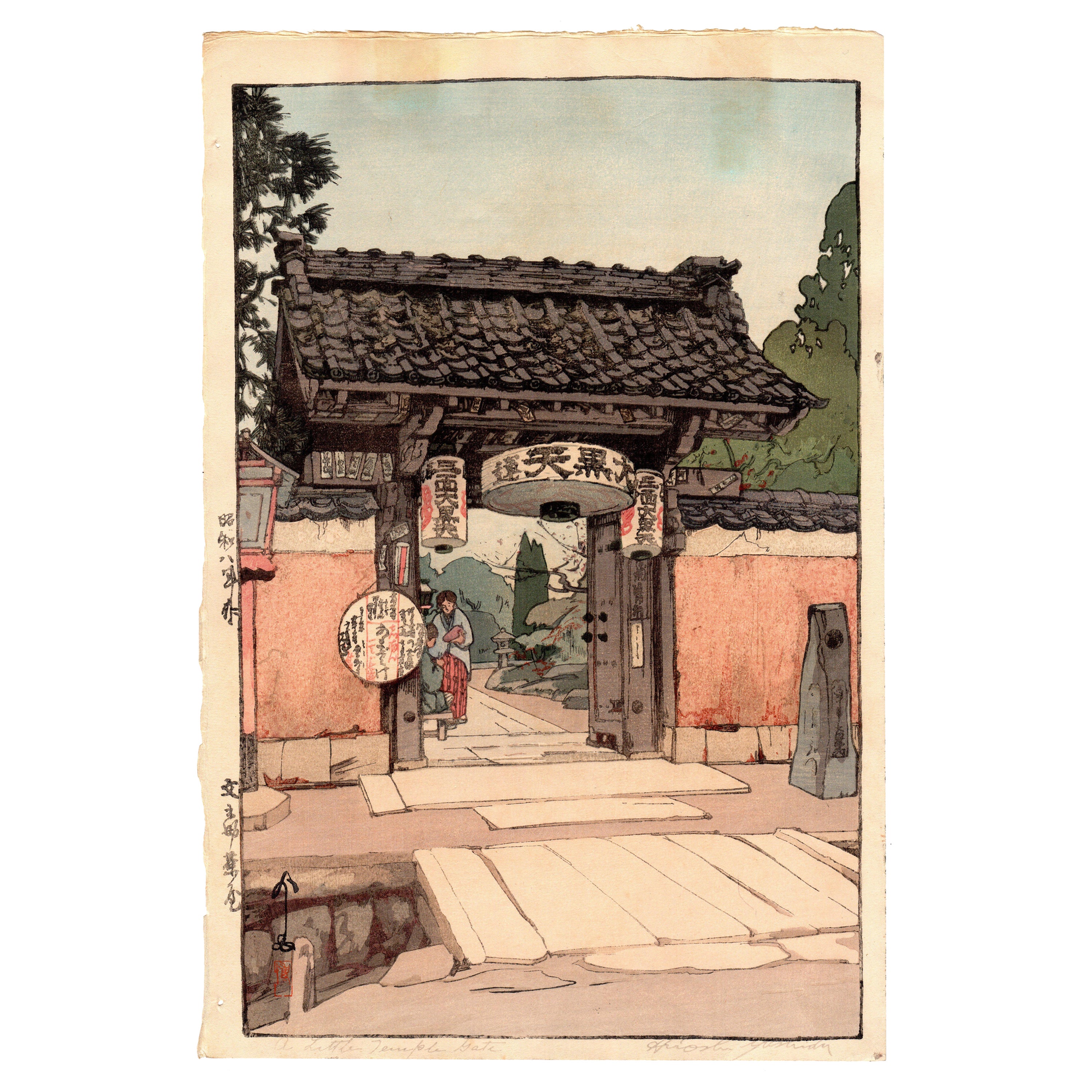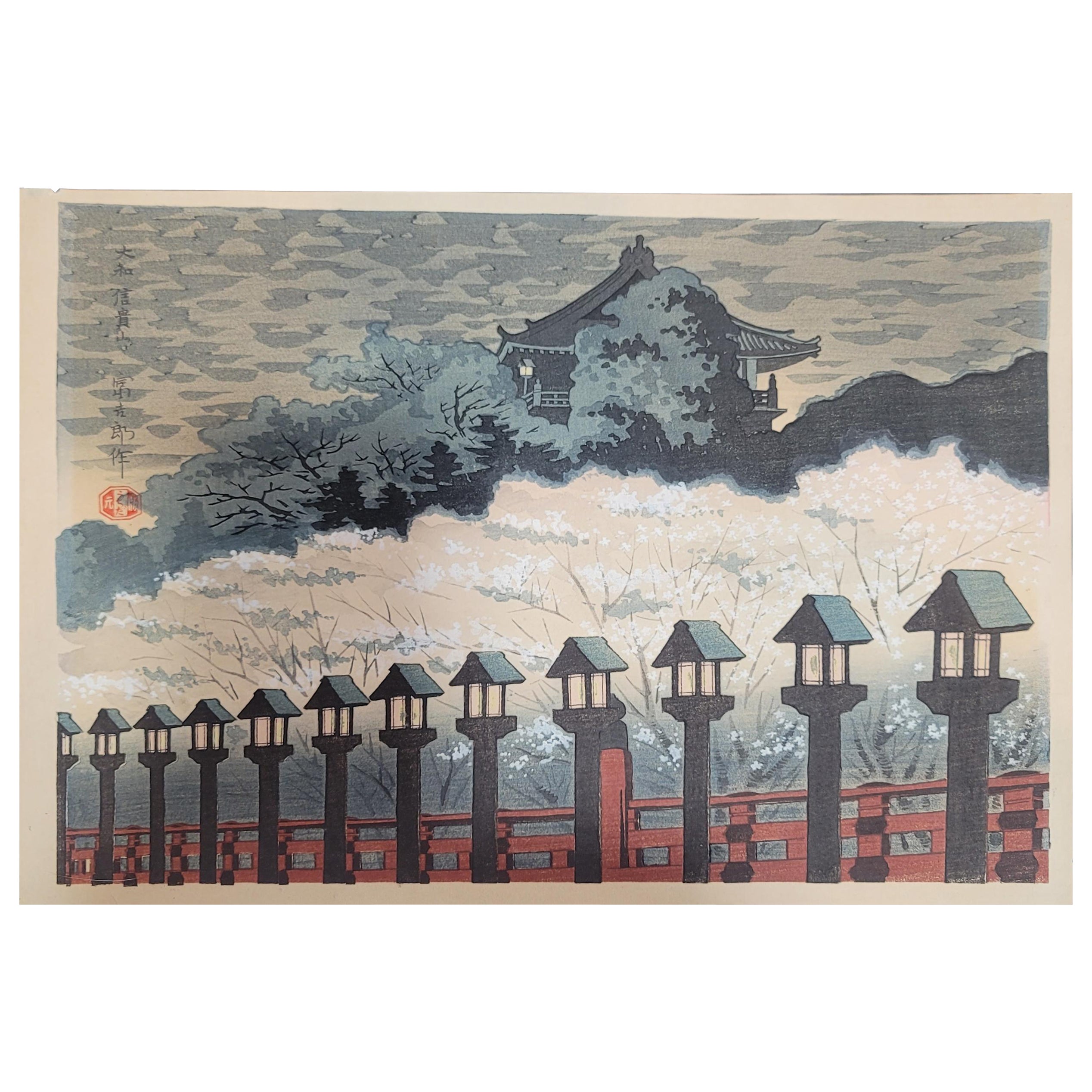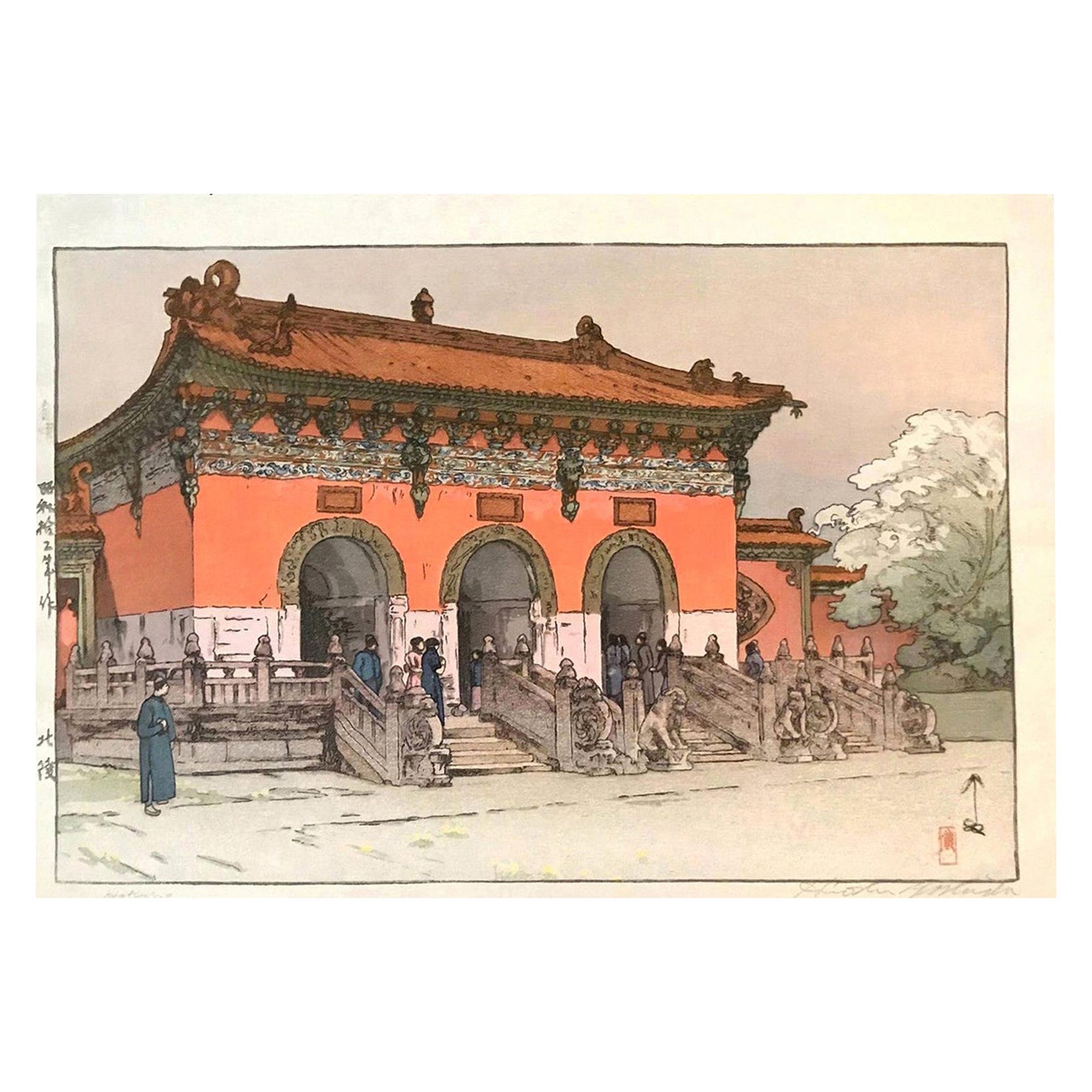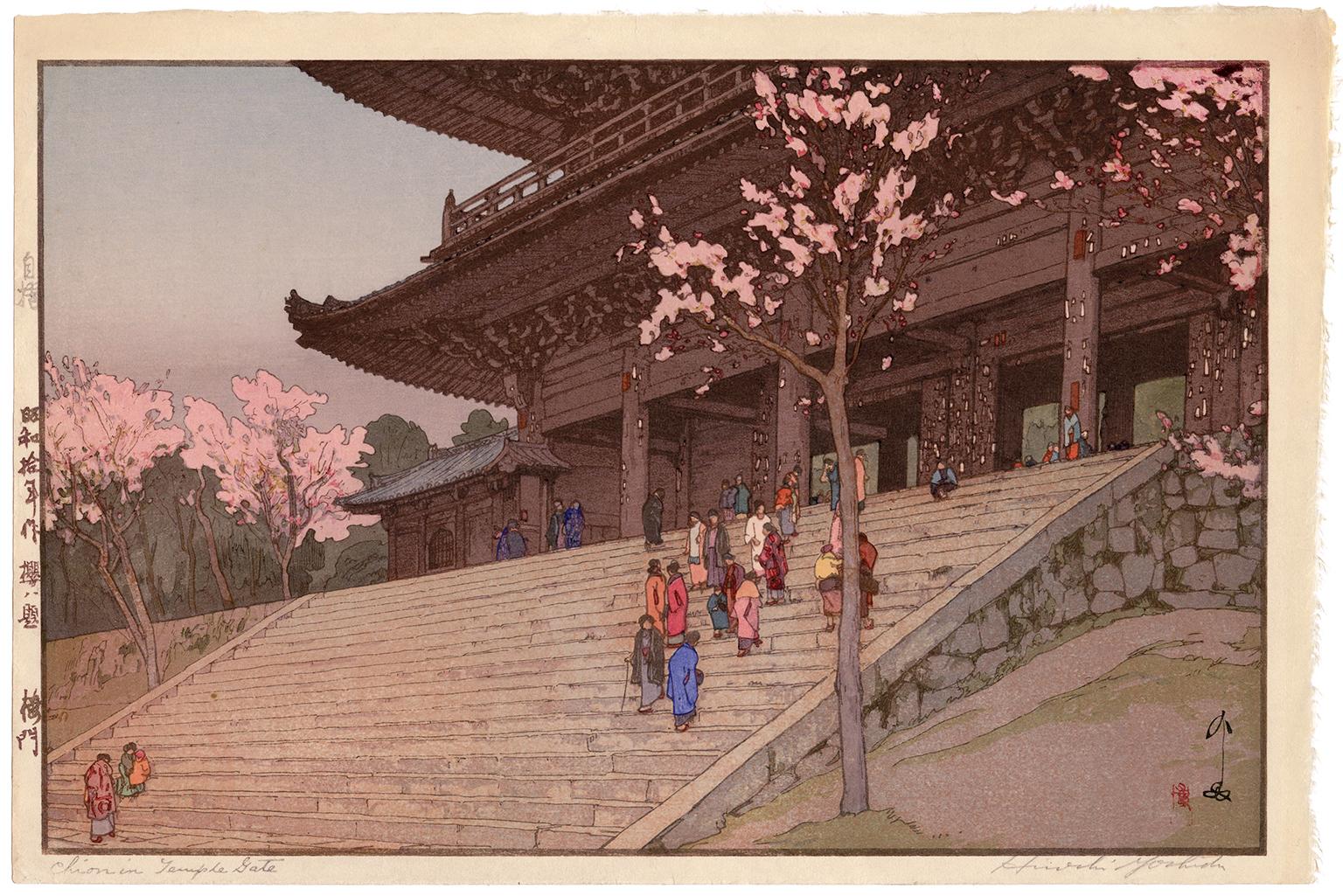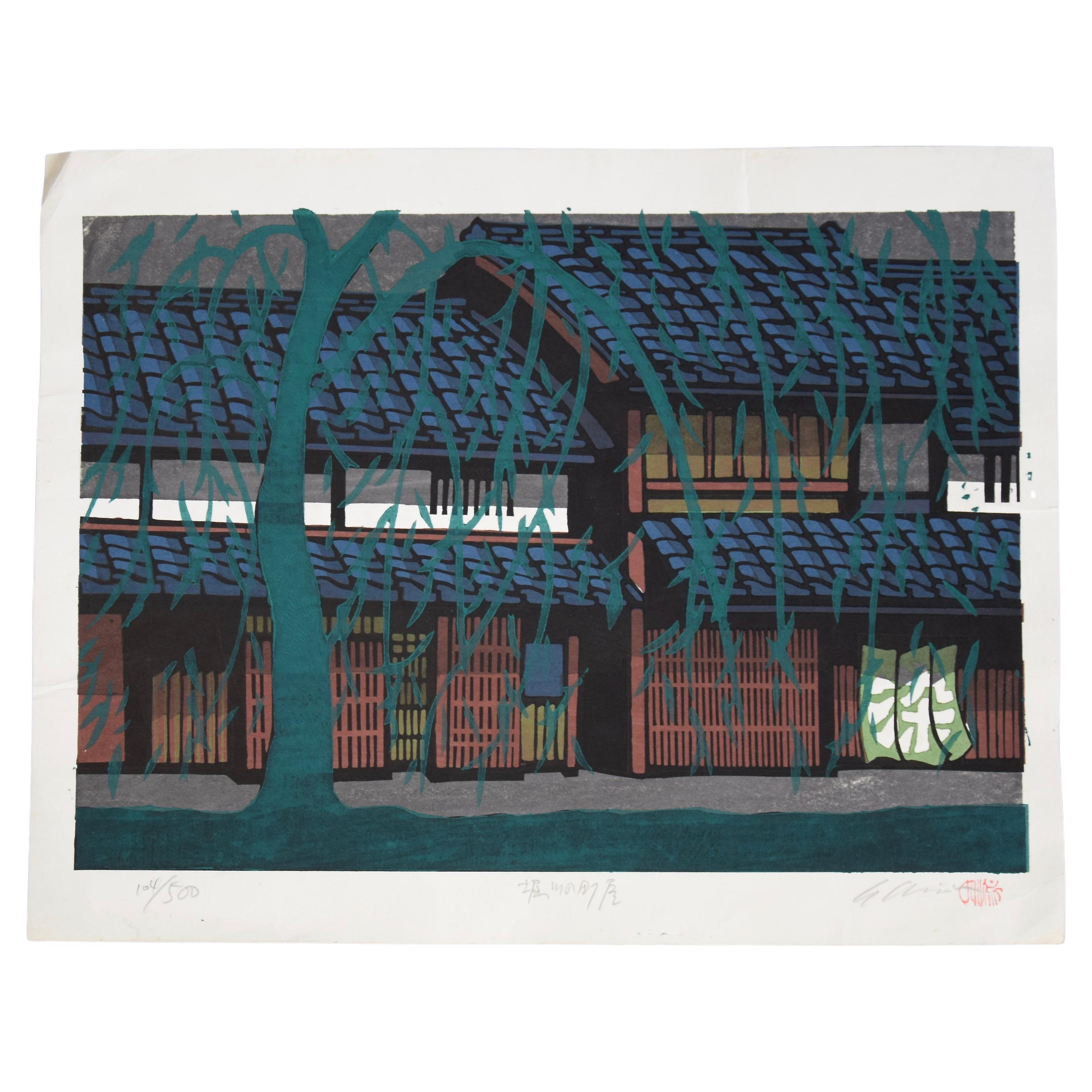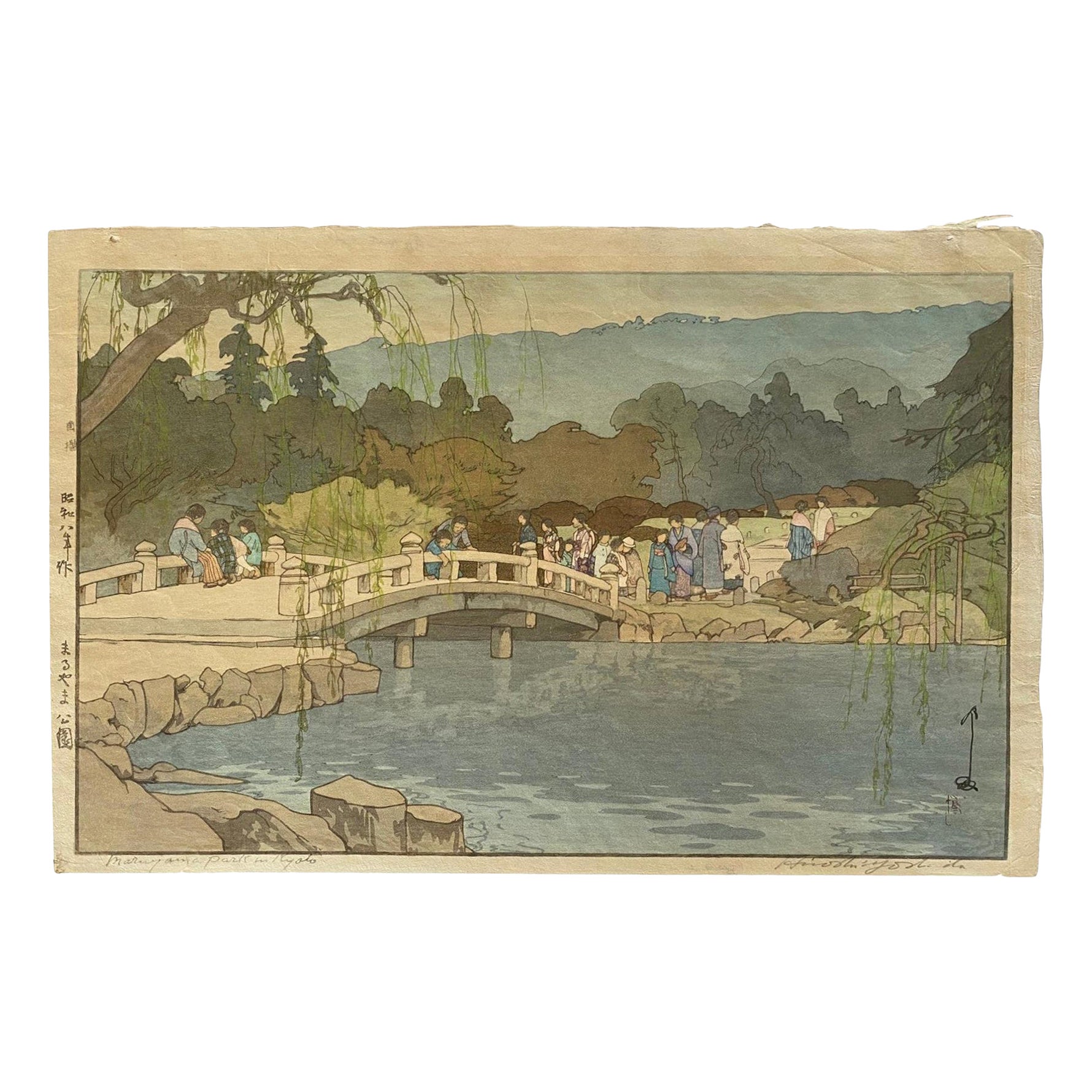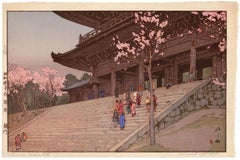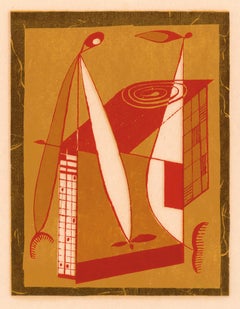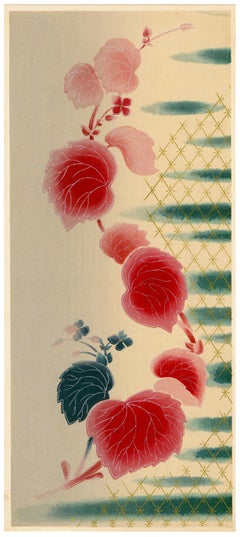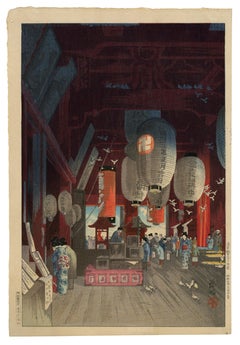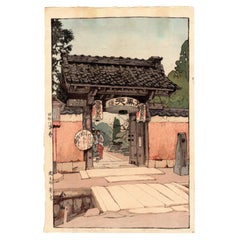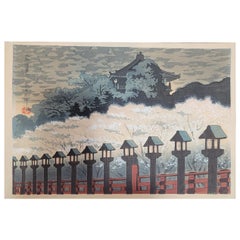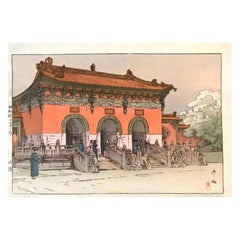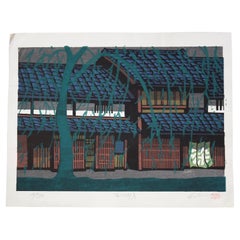Items Similar to 'Peking - Paifang Gate' — Mid-Century Watanabe Color Woodcut
Want more images or videos?
Request additional images or videos from the seller
1 of 3
Cyrus Le Roy Baldridge'Peking - Paifang Gate' — Mid-Century Watanabe Color Woodcut1925
1925
$750
£568.69
€652.48
CA$1,067.16
A$1,157.63
CHF 608.74
MX$14,085.96
NOK 7,610.28
SEK 7,177.43
DKK 4,871.63
About the Item
Cyrus Le Roy Baldridge, 'Peking '25', woodblock print, published 1926. Signed, titled, dated, and annotated 'No 124' in pencil. A fine impression, with fresh, undiminished colors; the full sheet, in excellent condition. Watanabe 6 mm seal, lower right, indicating an impression printed between 1945 and 1957. Archivally sleeved, unmatted.
Image size 9 5/8 x 14 5/16 inches; sheet size 10 7/16 x 15 3/8 inches.
ABOUT THE IMAGE
A 'paifang', also known as a 'pailou', is a traditional style of Chinese architectural arch or gateway structure. It has been theorized that the paifang gate architecture was influenced by Buddhist torana temple gates. Paifang are designed with traditional Chinese architectural motifs including multi-tiered roofs, prominent supporting posts, and gracefully arched openings.
This is an unusual ukiyo-e or 'floating world' woodcut published by Watanabe Shozaburo, Tokyo, in that the subject is of an early 20th-century scene in Peking, China.
ABOUT THE ARTIST
Cyrus Leroy Baldridge (1889–1977) was a noted illustrator, painter, printmaker, and writer. At the age of 10, he became the youngest student at Frank Holme’s Chicago School of Illustration. In 1907, he was accepted at the University of Chicago, where he continued his art education and graduated in 1911. Following graduation, Baldridge worked as an illustrator, later becoming a war correspondent on the battlefront during WWI. After the war, he settled in upstate New York and continued to work as a writer and illustrator while traveling the world with his wife, Caroline Singer, who was also a writer. The couple traveled from Africa to India and Japan in the 1920s.
Japanese art profoundly influenced Baldridge’s work—during his time in Japan, he met the famed Shin Hanga print publisher Watanabe Shozaburo in Tokyo. He produced several woodblock prints for Watanabe during the 1920s and 1930s. In 1952, he and his wife retired to Santa Fe, where he satisfied his taste for adventure, hiking the mountains of New Mexico and painting the landscape in oil and watercolor.
About the Seller
5.0
Recognized Seller
These prestigious sellers are industry leaders and represent the highest echelon for item quality and design.
Platinum Seller
Premium sellers with a 4.7+ rating and 24-hour response times
Established in 1995
1stDibs seller since 2016
322 sales on 1stDibs
Typical response time: 1 hour
Associations
International Fine Print Dealers Association
- ShippingRetrieving quote...Shipping from: Myrtle Beach, SC
- Return Policy
Authenticity Guarantee
In the unlikely event there’s an issue with an item’s authenticity, contact us within 1 year for a full refund. DetailsMoney-Back Guarantee
If your item is not as described, is damaged in transit, or does not arrive, contact us within 7 days for a full refund. Details24-Hour Cancellation
You have a 24-hour grace period in which to reconsider your purchase, with no questions asked.Vetted Professional Sellers
Our world-class sellers must adhere to strict standards for service and quality, maintaining the integrity of our listings.Price-Match Guarantee
If you find that a seller listed the same item for a lower price elsewhere, we’ll match it.Trusted Global Delivery
Our best-in-class carrier network provides specialized shipping options worldwide, including custom delivery.More From This Seller
View All'Chion-in Temple Gate' from 'Eight Scenes of Cherry Blossoms' — Jizuri Seal
By Hiroshi Yoshida
Located in Myrtle Beach, SC
Hiroshi Yoshida, 'Chion-in Temple Gate (Sunset)' from the series 'Eight Scenes of Cherry Blossoms (Sakura hachi dai: Sakura mon)', color woodblock print, 1935. Signed in brush 'Yoshida' and in pencil 'Hiroshi Yoshida'. A superb, early impression, with fresh colors; the full sheet with margins, on cream Japan paper; an area of slight toning in the top right sheet corner, not affecting the image, otherwise in excellent condition. Marked with a jizuri (self-printed) seal, upper left margin. Self-published by the artist.
Image size 9 5/8 x 14 3/4 inches (444 x 375 mm); sheet size 10 7/8 x 16 inches (276 x 406 mm). Archivally sleeved, unmatted.
Provenance: M. Nakazawa, Tokyo.
Literature: Japanese Landscapes of the 20th Century (Hotei Publishing calendar), 2001, May.
Collections: Honolulu Museum of Art, Museum of Fine Arts, Boston.
ABOUT THE IMAGE
Located in Kyoto, Chionin is the main temple of the Jodo sect of Japanese Buddhism, one of the most popular Buddhist sects in Japan, having millions of followers. The Sanmon Gate, Chionin's entrance gate, standing 24 meters tall and 50 meters wide, it is the largest wooden temple gate in Japan and dates back to the early 1600s. Behind the gate, a broad set of stairs leads to the main temple grounds.
ABOUT THE ARTIST
Painter and printmaker Yoshida Hiroshi (1876-1950) is regarded as one of the greatest artists of the Japanese 'shin hanga' (New Print) movement.
Yoshida was born as the second son of Ueda Tsukane in Kurume, Fukuoka Prefecture, a schoolteacher from an old samurai family. In 1891 he was adopted by his art teacher Yoshida Kasaburo in Fukuoka and took his surname. In 1893 he went to Kyoto to study painting, and the following year to Tokyo to join Koyama Shotaro's Fudosha private school; he also became a member of the Meiji Fine Arts Society. These institutions taught and advocated Western-style painting, greatly influencing Yoshida’s artistic development.
In 1899 Yoshida had his first American exhibition at Detroit Museum of Art (now Detroit Institute of Art), making the first of many visits to the US and Europe. In 1902 he helped reorganize the Meiji Fine Arts Society, renaming it the Taiheiyo-Gakai (Pacific Painting...
Category
1930s Showa Figurative Prints
Materials
Woodcut
'Chinoiserie' — Mid-Century Modernism
By Edward August Landon
Located in Myrtle Beach, SC
Edward Landon 'Chinoiserie', color serigraph, 1947, edition 50, Ryan 36. Signed in pencil in the image, lower right. Titled, dated, and annotated '4 COLORS – EDITION 50' in the scree...
Category
Mid-20th Century American Modern Abstract Prints
Materials
Screen
Japanese Kimono Fabric Design — Vintage Color Woodblock Print
Located in Myrtle Beach, SC
Anonymous, Japanese Kimono Fabric Design, color woodcut, c. 1930. A superb impression, with fresh colors, fine graduations, and metallic gold motifs, on ...
Category
Early 1900s Showa Figurative Prints
Materials
Woodcut
'Interior of the Kannon Temple at Asakusa' — Tokyo Landmark, Early Edition
Located in Myrtle Beach, SC
NARAZAKI EISHO (1864-1936), 'Asakusa Kannon-do no naido' (Interior of the Kannon Temple at Asakusa), color woodblock print, 1932. Signed Eisho lower right, with the artist’s red seal beneath. A fine impression with fresh colors; the full sheet with slight overall age toning, a drying tack...
Category
1930s Interior Prints
Materials
Woodcut
Kintai Bridge at Iwakuni in Suo Province (Suo iwakuni kintai-bashi), 1859
By Hiroshige II
Located in Myrtle Beach, SC
Utagawa Hiroshige II (1829-1869), 'Kintai Bridge at Iwakuni in Suo Province' (Suo iwakuni kintai-bashi), from the series 'One Hundred Views of Famous Pla...
Category
1850s Edo Landscape Prints
Materials
Woodcut
'Seven Actors in a Dragon Boat' — Edo period Kamigata Woodblock Print
Located in Myrtle Beach, SC
Munehiro Hasegawa, 'Seven Kabuki Actors in a Dragon Boat,' woodblock print, c. 1850, Osaka-e, Kamigata-e. Signed 'Munehiro' in the block, upper left. A fine impression with fresh co...
Category
Mid-19th Century Edo Figurative Prints
Materials
Woodcut
You May Also Like
Hiroshi Yoshida, “a Little Temple Gate”., Woodblock Print
Located in Norton, MA
A wonderful woodblock print image titled "A Little Temple Gate" by one of Japan's finest 20th-century artists and one of, if not the greatest working artis...
Category
Early 20th Century Japanese Prints
Materials
Paper
Japanese Woodblock Print by Tomikichiro Tokuriki, 1902-1999
Located in Norton, MA
About the artist
The art of Tomikichiro Tokuriki (1902~1999) is an important bridge between the two great movements of Japanese art in the early twentieth century; shin hanga and sosaku hanga...
Category
Mid-20th Century Japanese Prints
Materials
Paper
Hiroshi Yoshida Signed Japanese Woodblock Print Hokuryo with Jizuri Seal, 1937
By Hiroshi Yoshida
Located in Studio City, CA
A wonderful image titled "Hokuryo" by one of Japan's finest 20th century artist and one of, if not the greatest working artist in the Shin-Hanga movement. Yos...
Category
Vintage 1930s Japanese Showa Prints
Materials
Paper
Japanese Woodblock on Paper Print by Katsuyuki Nishijima
Located in Weesp, NL
Beautiful Japanese woodblock print by Katsuyuki Nishijima born in Kyoto in 1945.
Signed, titled and numbered by the artist in pencil.
Nishijima ha...
Category
Late 20th Century Japanese Mid-Century Modern Prints
Materials
Paper
Hiroshi Yoshida Signed Japanese Woodblock Print Maruyama Park in Kyoto, Jizuri
By Hiroshi Yoshida
Located in Studio City, CA
A wonderful image titled "Maruyama Park in Kyoto (Maruyama kôen)" by one of Japan's finest 20th century artist and one of, if not the greatest working artist in the Shin-Hanga moveme...
Category
Vintage 1930s Japanese Showa Prints
Materials
Paper
Japanese Woodblock Print Yoshida Hiroshi Small Town in China
By Hiroshi Yoshida
Located in Atlanta, GA
A Japanese woodblock print by Yoshida Hiroshi (1876-1950), entitled Chugoku no komachi (Small Town in China). The horizontal Oban format print was made in Showa 8th year (1933). On t...
Category
Vintage 1930s Japanese Showa Prints
Materials
Paper
More Ways To Browse
Architectural Arch
Architecture Gates
Chinese Arch
Cyrus Leroy Baldridge
Antique Wayang Golek Puppets
Betsy Brown
Bronze Balloon
Cinque Terre
Clay Sculpture Nude
Contemporary Bronze Bust
Cupid Oil On Canvas
Frank Thomas
Goddess Kannon
Henley Regatta
Henry Russell
Humpback Whale
Indonesian Golek Puppet
John Barrymore
